Aquatic Habitat Mapping
Aquatic habitat mapping plays a vital role in sustainable management practices for both wild fisheries and aquaculture operations. Using technologies like GIS (Geographic Information Systems), sonar, and remote sensing, researchers can create detailed maps of underwater environments, identifying key habitats for fish, shellfish, and other aquatic organisms. These maps help assess habitat quality, monitor biodiversity, and ensure the protection of ecologically sensitive areas. In aquaculture, habitat mapping helps locate optimal farming sites, minimizing ecological impacts and improving production efficiency. By mapping aquatic habitats, both conservationists and industry stakeholders can make informed decisions, ensuring the preservation of vital ecosystems and promoting sustainable practices in aquatic resource management.

Perry Raso
Matunuck Oyster Farm, United States
J L Giovanna Hesley
Education Emerita, CropKing Inc., United States
Virendra Kumar Goswami
Indian Institute of Technology, India
Amit Das
Memorial University of Newfoundland, Canada
Mandeep Kaur
Panjab University, India
Pavarot Noranarttragoon
Department of Fisheries, Thailand



Title : Application of Artificial Intelligence and NISAR satellite to study the air sea CO2 exchange and aquatic toxicology to develop ‘Aquatic Pollution Remediation Technologies’(PART)
Virendra Kumar Goswami, Indian Institute of Technology, India
Title : Conditionally pathogenic microparasites (Microsporidia and Myxosporea) of mullet fish potential objects of mariculture in the Black and Azov Seas
Violetta M Yurakhno, A. O. Kovalevsky Institute of Biology of the Southern Seas of Russian Academy of Sciences, Russian Federation
Title : New approaches to assessing and managing the multispecies fishery in the Gulf of Thailand
Pavarot Noranarttragoon, Department of Fisheries, Thailand
Title : Integrating art, science and rural development: The multifaced role of aquarium keeping
T V Anna Mercy, Kerala University of Fisheries and Ocean Studies, India
Title : Seaweed aquaculture policy gap analyses in Indonesia, Kenya, and Tanzania
Megan Considine, The Nature Conservancy, Puerto Rico
Title : Utilizing art to enhance learning STEM subjects required for aquaculture
J L Giovanna Hesley, Education Emerita, CropKing Inc., United States